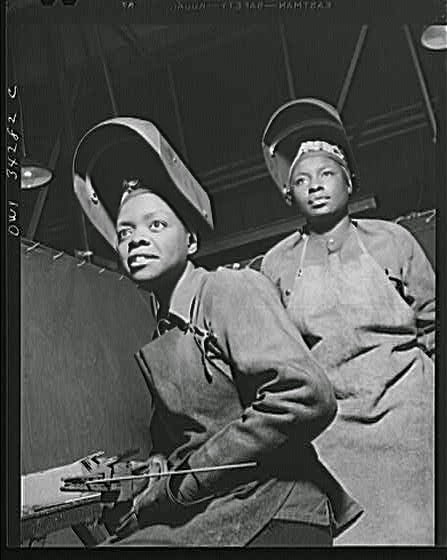Marx’s Capital Volume 1, Part 10b
Mogadishu, 1993
Colonialism
Here we are, at the end of Capital, Volume 1, the famous and huge book
that so many people talk about and so few people read. We have read it. We are
more fit to be cadres. We are more fit to be the vanguard. What remain are only
the three last chapters (attached), which
are not difficult to read, although as always they challenge us to be brave and
to act, and action will never be easy.
In Chapter 31 Marx states
that the origin of the industrial (not farming) capitalist is in colonialism.
“The discovery of gold and silver in America, the
extirpation, enslavement and entombment in mines of the aboriginal population,
the beginning of the conquest and looting of the East Indies, the turning of
Africa into a warren for the commercial hunting of black-skins, signalised the
rosy dawn of the era of capitalist production. These idyllic proceedings are
the chief momenta of primitive accumulation. On their heels treads the
commercial war of the European nations, with the globe for a theatre.”
“To-day industrial supremacy implies commercial
supremacy. In the period of manufacture properly so called, it is, on the other
hand, the commercial supremacy that gives industrial predominance. Hence the
preponderant rôle that the colonial system plays at that time. It was "the
strange God" who perched himself on the altar cheek by jowl with the old
Gods of Europe, and one fine day with a shove and a kick chucked them all of a
heap. It proclaimed surplus-value making as the sole end and aim of humanity.”
This last describes in a single sentence, the state of affairs that
Marx's book was written to expose; and Marx did succeed in exposing “capital”
as “surplus-value making”.
Yet it appears that Marx did not deal with Primitive Accumulation in the
sense that the phrase would nowadays be understood. Marx does not establish
that capitalism required a ready pile of money or its equivalent. What he
establishes is how the requisite class forces were brought into being, in Western
Europe, in the revolutions that overthrew feudalism.
It is a mistake to think that a capitalist business requires “capital”
in advance, if by “capital” is meant money in the bank, or land, buildings,
equipment et cetera. It does require such things, but they do not make it a
capitalist business as opposed to any other kind of project. What makes a
business work as capitalism is a dual relationship. The first part of it is the
relationship between the worker and the capitalist. The second part is the relationship
of the capitalist with his market. If these two relationships do not exist, or
are faulty, then a capitalist business will not survive. But if they do exist,
then the other means will probably be found without too much difficulty.
Marx shows clearly how the proletariat arose historically in Europe in
the 16th century. He shows how the bourgeois class arrives on the scene. He
shows how all the social building blocks including proletariat and market, are
assembled, but not the money. In any case, capital is not money, it is a
relation. Marx says so, directly, in Chapter 33. So the accumulation necessary
for capitalism is not treasure, but is an accumulation of relationships; this
is what we learn from the chapters in “Capital” on Primitive Accumulation.
Marx does not, in Capital, make a strong distinction between slavery and
capitalism. He describes slavery candidly and without flinching from the horror
of it. But he never discusses slavery in a comparative way, as distinct from
surplus-value-extracting bourgeois-and-proletarian capitalism. Yet (bourgeois)
slavery also started in the 16th century, or slightly before, and it ran on as
a transcontinental Atlantic system for the next three hundred years, in
parallel with the early development of capitalism proper, until Marx’s time,
such that the last end of bourgeois slavery was the cataclysm of the American
Civil War, that was happening while Marx was writing Capital.
Chapter 32 of Capital, Volume
1 contains about 1000 words in only four paragraphs. It is a full historical
sweep from the past of slaves and serfs through present capitalism to the
future, when the expropriators will be expropriated. It resembles the Communist
Manifesto.
Chapter 33 is very
interesting, but in spite of its title, it is not really about colonialism.
Instead, Marx uses the example of part of one colony of the time, Australia, to
make points about capitalism and to “discover in the Colonies the truth as to
the conditions of capitalist production in the mother country”. Also note the
very last paragraph of the chapter (and the book), which says:
“We are not concerned here with the conditions of the
colonies. The only thing that interests us is the secret discovered in the new
world by the Political Economy of the old world, and proclaimed on the
housetops: that the capitalist mode of production and accumulation, and
therefore capitalist private property, have for their fundamental condition the
annihilation of self-earned private property; in other words, the expropriation
of the laborer.”
“...capital is not a thing, but a social relation
between persons, established by the instrumentality of things,” says Marx.
In the next part, we will commence a ten-week course on Marx’s “Capital”,
Volumes 2 and 3.
·
The above is to
introduce the original reading-text: Capital
V1, C31, 32, 33, Capitalist, Accumulation, Colonialism.









